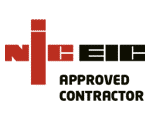Reactive maintenance is a type of maintenance performed in response to an issue or problem. It is the opposite of proactive maintenance, which is performed in advance to prevent problems from occurring.
Reactive maintenance can be reactive to both scheduled and unscheduled events. Unscheduled reactive maintenance is performed in response to an unexpected event, such as breakage or leak.
While reactive maintenance can be necessary, it is often less efficient and more costly than planned preventative maintenance. As a result, many building maintenance plans focus on preventive and predictive maintenance strategies to avoid the need for reactive maintenance.
What is an example of reactive maintenance?
An example of reactive maintenance would be if a business waited to fix a leaking pipe, potentially an easy fix. If the pipe burst, you would need to pay for the damage to fixtures and fittings around the leakage and the cost of replacing the pipe.
This type of maintenance can cost a business more money in the long run since it is not proactive and does not prevent issues from occurring.
Reactive maintenance can also create safety hazards if problems remain unresolved, leading to preventable accidents or injuries.
Additionally, reactive maintenance can cause disruptions in business operations if repairs are completed during working hours.

What are the benefits of reactive maintenance?
Despite these disadvantages, reactive maintenance can still be a helpful tool for businesses. It may not be possible or practical to fix an issue before it becomes a problem in some cases.
For instance, a business may not be able to predict when a piece of equipment will break down and need repairs.
Reactive maintenance can help minimise downtime in these situations, but repairs will need to be resolved quickly.
Interested in our services?
If you have a project in mind and would like some advice on your reactive maintenance
What you should keep in mind
If you consider using reactive maintenance for your business, there are a few things to keep in mind.
First, make sure that you have a plan in place for dealing with emergencies to minimise the impact of disruptions.
Second, develop a schedule for regular inspections and maintenance to catch and fix minor problems before they become big ones.
Finally, be sure to keep track of the work completed so that you can identify any trends or patterns.
By following these tips, you can ensure that reactive maintenance is used effectively at your business.
The pros and cons of reactive building maintenance
Cons
Reactive maintenance can often be more expensive than preventive maintenance, as it involves fixing things that are already broken. This leads to a never-ending cycle of repairs, as each new problem that arises must be fixed immediately.
And without any opportunity for long-term planning, it can cause short term disruptions to your business operations.
Reactive maintenance does not allow proactive measures to prevent future problems. These factors need to be considered when deciding whether or not reactive maintenance is the right choice for your business.
Pros
If you decide that reactive maintenance is the best option for your company, you should keep a few things in mind.
First, be sure to understand the problem before taking any action. It helps to avoid making things worse and will allow you to troubleshoot more effectively.
Second, always have the necessary tools and supplies on hand so that you can fix the problem as quickly as possible.
And third, make sure to document everything so that you can track the progress of the repairs and identify any potential future problems.
By following these tips, you can ensure that reactive maintenance is conducted safely, efficiently, and effectively.
What we suggest
Ashby Facilities provides reactive building maintenance services to address any issue or problem as quickly as possible. We have extensive experience in all areas of building maintenance, and our team is available 24/7 to respond to your needs.







